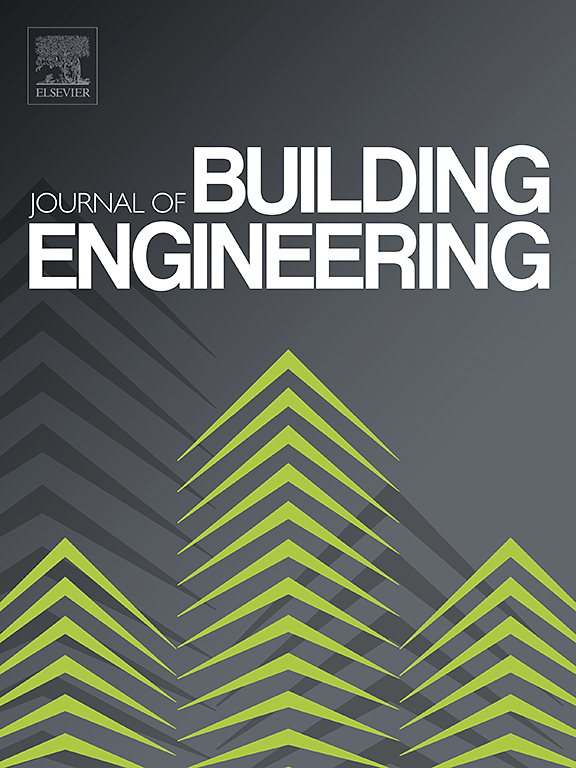在合成和实时环境中利用深度视觉自动评估石质文物结构的退化情况
IF 6.7
2区 工程技术
Q1 CONSTRUCTION & BUILDING TECHNOLOGY
引用次数: 0
摘要
保护历史建筑是可持续发展领域的一个重要支柱,在可持续发展领域,保护遗产具有优先地位。然而,在这些建筑奇迹历经岁月的洗礼后,对其进行人工监测仍然是一项乏味而耗时的工作。在这一过程中,计算机视觉成为一种变革性的工具,可以减轻甚至消除现场评估中大量人工参与的必要性。本研究对知识领域的新贡献包括两个关键方面:首先是利用合成图像对植被进行分类,其次是将模型调整为自动缺陷识别,最终创建了一种专门用于历史石质建筑缺陷检测的算法。目前的研究致力于利用基于掩膜区域的卷积神经网络(R-CNN)算法(一种先进的计算机视觉方法)的优势,来辨别、精确定位和划分历史石结构中的损坏情况,并对类似植被生长的异常情况进行分类。该模型的训练阶段包括对通过 Blender 3D 软件生成的 501 幅合成图像中的异常点进行细致的标注。随后,该模型经过了严格的测试,采用了来自印度各地联合国教科文组织世界遗产标志性景点的 428 张照片,包括 Udayagiri 和 Khandagiri 石窟、Golconda Fort 和 Lingaraj Temple。该数据集共包含 2846 张图片,按 80:10:10 的比例分别用于训练、验证和测试。基于掩码 R-CNN 的 ResNet101 模型获得了 94% 的惊人准确率,以及 94% 的交集大于联合 (IOU)。同时,基于掩码 R-CNN 的 ResNet50 模型的准确率为 93%,IOU 为 91%。为了衡量所提模型的有效性,我们与最先进的 YOLOv8 模型进行了对比分析。因此,建议的方法可用于创建一个自动系统,对石砌文物结构进行视觉检测,为后代保护它们。本文章由计算机程序翻译,如有差异,请以英文原文为准。
Automated evaluation of degradation in stone heritage structures utilizing deep vision in synthetic and real-time environments
Preserving historical structures stands as a crucial pillar in the realm of sustainable development, where safeguarding our heritage takes precedence. However, the manual monitoring of these architectural marvels as they weather the passage of time remains a tedious and time-consuming endeavor. In this pursuit, computer vision emerges as a transformative tool, poised to alleviate or even eradicate the necessity for extensive human involvement in on-site assessments. The novel contributions of this study to the realm of knowledge encompass two key aspects: firstly, the utilization of synthetic images for categorizing vegetation, and secondly, the adaptation of the model for automated defect identification, culminating in the creation of an algorithm tailored for flaw detection in historical stone buildings. Present research endeavors to harness the prowess of the Mask Region-based Convolutional Neural Network (R-CNN) algorithm, a cutting-edge computer vision methodology, to discern, pinpoint, and delineate deteriorations within historical stone structures, classifying anomalies akin to vegetative growth. The model's training phase involves meticulously annotating anomalies within 501 synthetic images generated through Blender 3D software. Subsequently, the model undergoes rigorous testing, employing 428 photographs sourced from iconic UNESCO World Heritage sites across India, including Udayagiri and Khandagiri Caves, Golconda Fort, and Lingaraj Temple. The dataset expands to encompass a total of 2846 images, partitioned into an 80:10:10 ratio for training, validation, and testing, respectively. The Mask R-CNN-based ResNet101 model yields an impressive accuracy rate of 94 %, coupled with an Intersection over Union (IOU) of 94 %. Meanwhile, the Mask R-CNN-based ResNet50 model achieves a commendable accuracy of 93 %, with an IOU of 91 %. To gauge the efficacy of the proposed model, a comparative analysis is conducted with the state-of-the-art YOLOv8 model. Henceforth, the proposed methodology can be utilized to create an automated system for the visual inspection of stone-built heritage structures, to preserve them for future generations.
求助全文
通过发布文献求助,成功后即可免费获取论文全文。
去求助
来源期刊

Journal of building engineering
Engineering-Civil and Structural Engineering
CiteScore
10.00
自引率
12.50%
发文量
1901
审稿时长
35 days
期刊介绍:
The Journal of Building Engineering is an interdisciplinary journal that covers all aspects of science and technology concerned with the whole life cycle of the built environment; from the design phase through to construction, operation, performance, maintenance and its deterioration.
 求助内容:
求助内容: 应助结果提醒方式:
应助结果提醒方式:


